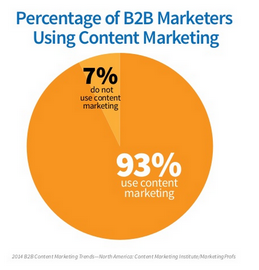Email preference centres are designed to cater to both prospects and existing customers. Both should have control over what they do and don’t receive, which means that marketers can send more targeted communications.
With the right tweaks and customisations, a preference centre can be one of the best tools in a marketer’s arsenal for creating authentic relationships with prospects and customers alike. But many marketers think they don’t generate much in the way of actionable data or customer activity. They require a certain amount of investment (in time and money) to get them right, but once they’re up and running, they can prove fruitful.
If you’re a marketer, here are some tips on how you should use it to get the ROI you need to present to the board.
Differentiate between what you do and don’t need
Before customers begin browsing, clicking, downloading, and buying, you’ll probably only be working with preference data. That means preference options need to capture as much information as possible without making the selection process so laborious that customers want to abandon it.
To help them, you should decide what information you do and don’t need. If you just need email addresses, you can probably get information faster, but you might be sacrificing richness for agility. For example, if you’re a fashion retailer, you might want to know what their preferred colours are, what brands they prefer, and any other information that might help you create tailored content and offers.
The information that you do and don’t need will change over time, so you’ll need to continue reviewing these forms. Even so, they should focus on what you need, rather than arbitrarily gathering as much information as possible.
Give options
The easier you can make the preference process for your customers and prospects, the better data you’ll collect. Making every field mandatory can often have the opposite effect to the one that’s intended and push them to opting out of everything. Not everyone who wants to shop with you will want to give you their phone number and allowing them to pick and choose what information they give you will make them feel more comfortable.
Providing more options makes the preference process more user-friendly and gives them alternatives to unsubscribing. For example. if they don’t want to receive offers via SMS, by giving them options, they can still opt into everything else. You should also consider letting them change their email address, get fewer communications overall and only receive certain types of offers.
Make sure it works across platforms
A lot of marketers still default to web formatting, even though customers will use multiple devices. This mainly happens if the preference centre was made before smartphones and tablets became popular, but it can still happen in newer environments.
Both the desktop and mobile experience need to be intuitive and easy to navigate. If it isn’t, you’ll need to work with website and email design teams to optimise it. For example, they should be able to implement social signups that make it quick and easy for mobile users to opt-in to emails and use responsive design to make sure users see fewer form fields when using a smaller screen.
Consider customer intent
A preference centre should make it easy. If a user wants to change their email address or opt out of sales reminders, they should be able to do so at the click of a button. They shouldn’t need to go through the entire preference centre to find the option that they’re looking for.
To make this seamless, you should build out variations based on different scenarios of what your customers might want to do. You should create a clear causal link between what a subscriber does and what they intend to do.
GDPR is dictating how marketers behave. Data collection now tends to work in favour of the customer, but this doesn’t need to be a bad thing. In fact, in some sense, it has served as a wake-up call. Putting your customer’s preferences first has always been central to a good marketing strategy. Now, GDPR has pushed that thought further. Any marketers still struggling with the concept might find email preference centres to be a great place to start.
Digital & Social Articles on Business 2 Community
(27)



